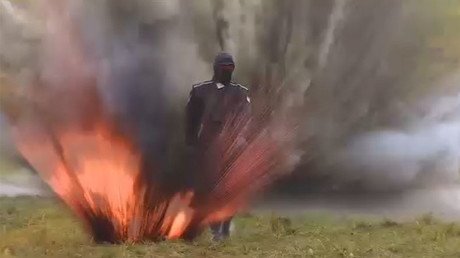Oops! New York Times corrects Skripal story, says no ‘dead ducks’ or ‘sick kids’ from ‘Novichok’
The New York Times has corrected a report that UK officials had shared photos with the CIA depicting children and animals who’d been exposed to the so-called Novichok nerve agent after coming into contact with the Skripals.
The Times reported on April 16 that the British government had supplied images of “young children hospitalized” and of dead ducks, inadvertently poisoned after interactions with Sergei Skripal and his daughter Yulia at a park in Salisbury in March of last year. The paper pointed to the “sloppy work of the Russian operatives” who were blamed for what London calls a nerve agent attack last year.
While the original story claimed the images were used to convince US President Donald Trump to expel 60 Russian diplomats from the US in response to the Skripal episode, the Times now says no such photos exist.
“An earlier version of this article incorrectly described the photos that [CIA Director] Gina Haspel showed to President Trump during a discussion about responding to the nerve agent attack in Britain,” reads the correction, issued almost two months after the original story was published.
I made a significant error in my April 16 profile of Gina Haspel. It took a while to figure out where I went wrong. Here is the correction: 1/9 pic.twitter.com/T27mHL0Knq
— Julian E. Barnes (@julianbarnes) June 5, 2019
Haspel, instead, presented the president with generic images illustrating the harmful effects of some nerve agents, while the British claims of sick kids and poisoned birds were based on “early intelligence reports,” the corrected story says.
While the Times amended the story and added an editor’s note, the paper apparently forgot to scrub a photo caption describing a “slipshod attack that also sickened children, killed ducks and required careful cleanup.”

Prior to the correction, there were already signs that something was off about the story. Shortly after the Skripal incident, British tabloid the Daily Mirror reported that three children were indeed hospitalized after feeding ducks in a Salisbury park with the Skripals, but blood tests revealed that the children were fine.
One of the boys reportedly even ate some of the bread supplied by Skripal and intended as bird-food. According to UK authorities, Sergei Skripal’s hands were coated in a highly-lethal nerve agent at that moment; it is unclear how the child could have avoided poisoning.
This is only one aspect of the Skripal story that does not make sense, but the UK authorities still maintain it could have only been an officially sanctioned assassination attempt by the Kremlin – which Moscow outright denies. The episode has fueled tensions between Russia and the West. Nearly 20 countries, most of them in the EU, moved to expel some Russian diplomats in response to the incident last year, in addition to the 60 ejected from the United States.
Also on rt.com Hospitalized children & dead ducks? The ‘official’ Skripal narrative goes completely quackersLike this story? Share it with a friend!















